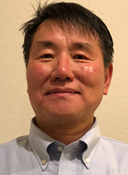USING NMR TO CHARACTERIZE FLUIDS IN TIGHT ROCK UNCONVENTIONAL AND SHALE FORMATIONS
Northside Houston
Speaker:
Seminar Date: Apr 26 2023
Registration Opens: Apr 05 2023 - Apr 26 2023
Time: 11:30 AM - 01:00 PM (US CDT)
Admission/Registration Link: None
Donation Link: None
Meeting/Webinar Link: None
Contact: Ali Eghbali (VP Northside, SPWLA Houston Chapter)
Corresponding: vpnorthside@spwla-houston.org
Fees: FREENOTES:
Speaker : Boqin Sun (Chevron)
Date : Wednesday, April 26, 2023
Time : 11:30 am – 1:00 pm (US CDT)
Venue : Baker Hughes, 2001 Rankin Rd, Houston, TX 77073
Admission : This activity will include a boxed lunch.
Parking Info : Guest
parking is available free of charge. Upon arrival, please proceed to the front
desk to check in
The seminar is sponsored by Baker Hughes so there is no charge for registration, however, you still need to register using the applicable links below. Attendance is limited to 40 person, hence advanced registration is preferred and cut when reaching 40. Please register by April 24th, 2023 @ 11am to reserve lunch using the above provided link.
Contact : Amer Hanif (SPWLA Houston VP Northside)
Corresponding vpnorthside@spwla-houston.org
ABSTRACT:
Petrophysical characterization and quantification of OOIP/OGIP and producibility in tight rock unconventional (TRU) and shale reservoirs remains challenging. The porosity system of these reservoirs is dominated by nano and micro pores, while the matrix system is formed by the mixture of regular shale and kerogen with different maturities. Therefore, the total porosity in an unconventional reservoir is often less than 10PU (porosity unit, or percentage of total volume), and the permeability ranges from nano to micro-Darcy. Storage and transport of hydrocarbon varies with the percentage and maturity of the organic material in TRU and shale formations and impacts up to 20% of OOIP/OGIP. Evaluation of porosity, saturation, and matrix permeability from conventional logs becomes very difficult and often requires many core measurements to correctly define the rock and pore system. Routine NMR workflows for characterizing conventional reservoirs cannot directly be used to derive petrophysical properties in TRU formations. Through laboratory NMR core analysis and NMR logging field trials in various TRU and shale reservoirs, we have developed a new NMR shale interpretation workflow that focuses on (1) obtaining high-quality raw echo data by optimizing data activation sequences for TRU and shale formations, (2) improving the data processing scheme by enhancing T2 resolution to separate different fluid components in T2 distributions, (3) adapting a new fluid typing method that only involves clay-bound water and capillary bound fluids, part of which is also producible, and (4) using NMR core analysis to verify the cutoff and T1/T2 ratio trend to improve fluid identification in TRU and shale reservoirs. The workflow has been successfully applied to evaluate petrophysical properties in the Marcellus and Vaca Muerta formations. It reduces the uncertainty of total porosity and free fluid volume (FFV) and identifies fluid types and sweet spots.
BIOGRAPHY:
Boqin Sun is a Chevron Fellow and a research consultant at Chevron Technology Center. He joint Chevron in 2001 and has been working on various NMR applications in solution, solid, and petrophysics. He received a BS from Zhejiang University in 1982 and a MS from Wuhan Institute of Physics in 1985, both in Physics, and a PhD from UC Berkeley in 1991 in Chemistry. Previously he worked as NMR tool physicist for Schlumberger at Sugar-Land product center for four years. Before that, he was a Postdoctoral Associate at MIT.
